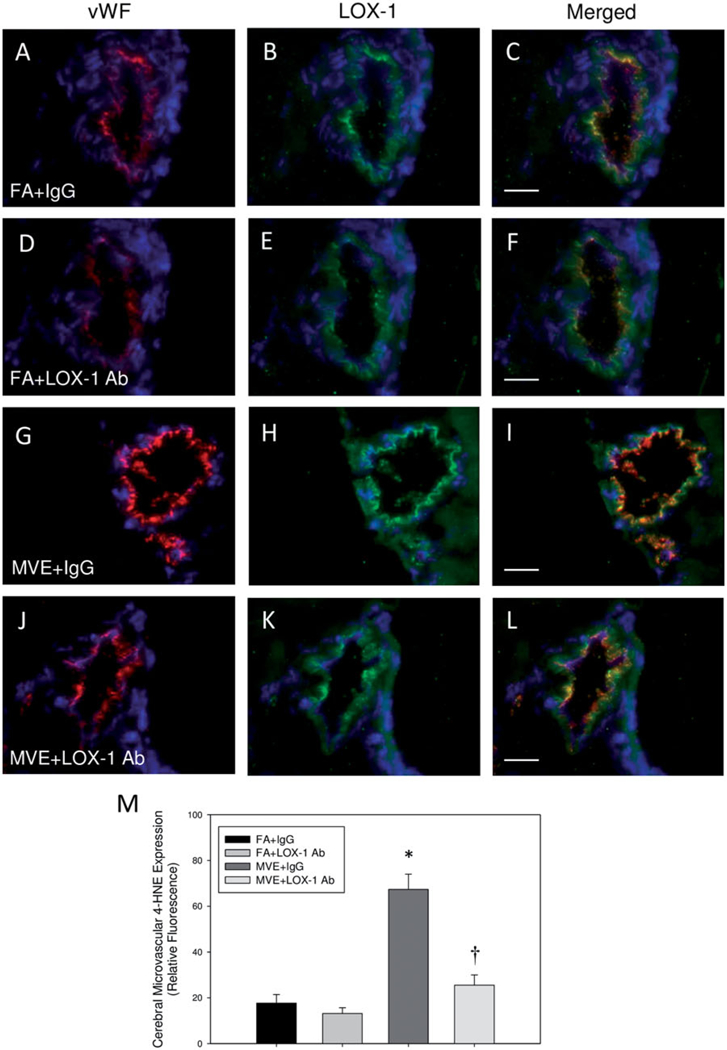Figure 7.

MVE-exposure induces lipid peroxidation in the cerebral microvasculature of ApoE−/− mice, which is attenuated with LOX-1 Ab treatment. Double immunofluorescence of 4-hydroxynonenol (4-HNE), a marker of lipid peroxidation (green fluorescence) and endothelial-cell specific vonWillebrand factor (vWF) (red fluorescence) in cerebral microvessels (frontal cortex) from ApoE−/− mice exposed to either (A-C) FA + IgG; (D-F) FA + LOX-1 Ab (16 mg/ml, 0.1 ml/mouse, every other day throughout exposure); (G-I) 100 PM μg/m3 of mixed vehicular emission (MVE) + IgG; or (J-L) MVE + LOX-1 Ab for 6h/d, 7 d/week, for 30 d; blue fluorescence = Hoechst nuclear stain. Colocalization was determined by quantifying total fluorescence of overlayed signals from a minimum of three slides, two sections each, three regions from each section (n = 5–7 per group), which is represented by the graph shown in panel M. Arrows indicate increased 4-HNE expression in the cerebral microvasculature. Scale bar =10 μm; 100 × magnification. Control slides with no primary antibody were also done (not shown) to confirm specific binding. *p < 0.050 compared to FA + IgG control, †p < 0.050 compared to MVE + IgG, as determined by ANOVA.
